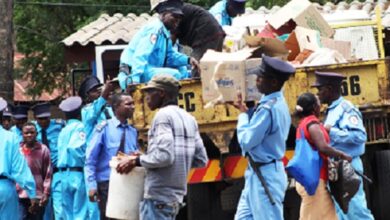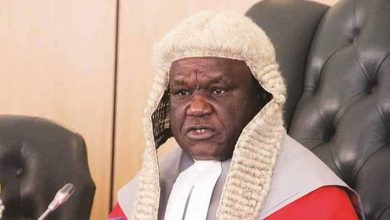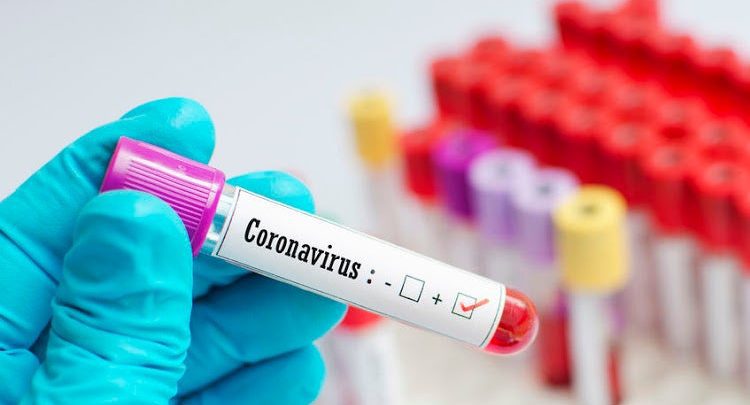
With over 90 percent of Covid-19 patients isolating at home in Bulawayo and lack of resources to monitor them, communities remain prone to local infections.
According to health experts, this means that authorities must expand testing and contact tracing capabilities to reduce the transmission of the coronavirus.
They say this is because most of the people diagnosed with Covid-19 are self-isolating within their communities.
As of July 29, Bulawayo had 786 confirmed cases of Covid-19, 275 recoveries and 18 new cases of local transmission were recorded on the day.
In an interview with CITE, Director of Health Services, Dr Edwin Sibanda said Elangeni Training Centre, which is Bulawayo’s designated isolation centre had a capacity of not more than 80 beds.
“93 percent as of Friday last week, in terms of percentages of people with Covid-19 were self-isolating at home. This is a living figure as the figures change on a daily basis. Today as we speak the ambulance was called to collect suspected cases while others would be discharged from isolation. A complete update requires surveillance daily, which shows the active cases and those who are admitted at Thorngrove Infectious Diseases Hospital,” he said.
Dr Sibanda noted that ideally, the Rapid Response Teams were supposed to visit patients twice a week but as the numbers “spiralled up there were challenges in visiting all of the people who are self-isolating.”
His sentiments qualified the need for more resources allocation needed in fighting the spread of Covid-19 and making sure people stick to preventative measures.
Dr Sibanda added the health services department was working on a contract to make people with Covid-19 know why they are at home.
“We are working on entering into a contact where patients commit to do the following and what not to do while at home. We will also provide an undertaking to do certain things. The contract will make sure people stick to the prescribed measures,” he said.
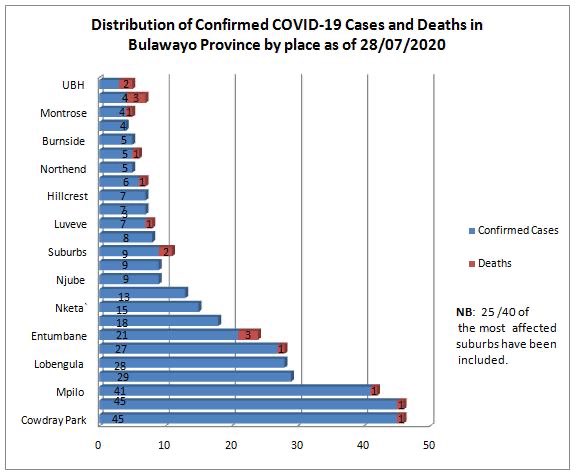
These graphs are spot maps showing the distribution of Covid-19 cases in Bulawayo and a snippet of the number of cases per suburb as at Monday, 27 July 2020 when the city had 716 cases.
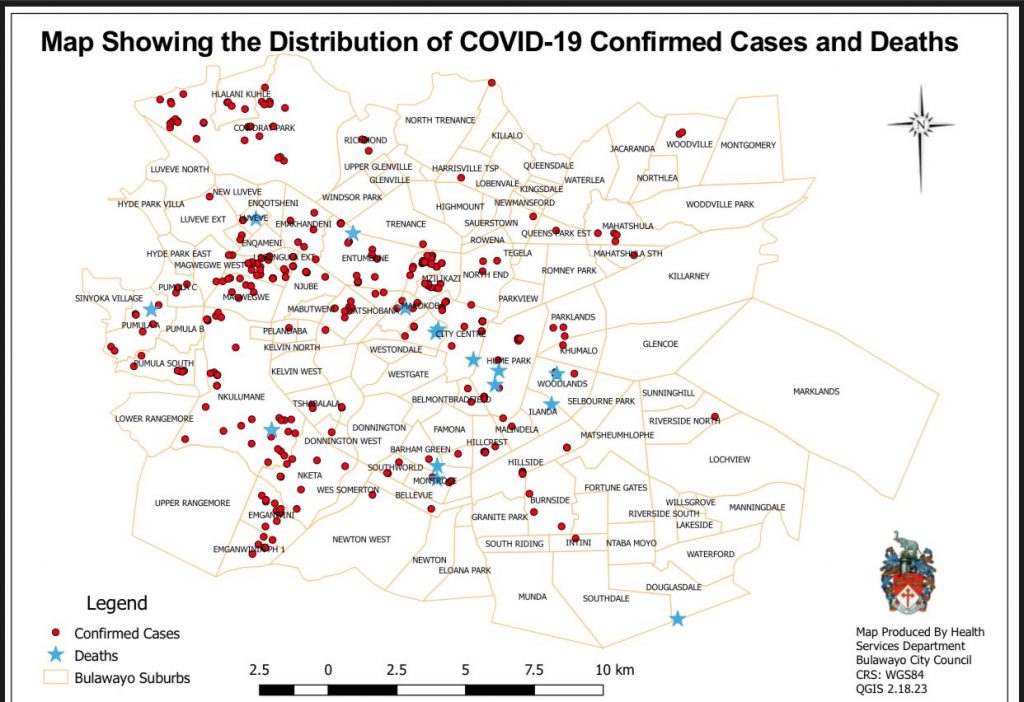
The spot maps are important in identifying hot spots and clusters, which is important in designing testing and other preventive measures.
Most of the positive cases are recorded in Cowdray Park, followed by Mpilo Central Hospital.
As the Covid-19 numbers continue surging, concerns have been raised that statistics released by the Ministry of Health and Child Care do not indicate how many people are admitted at hospitals, are critical or are still recovering.
Former Health Minister, Dr David Parirenyatwa expressed the same concern but explained the majority of people affected from Covid-19, including those who were asymptomatic would be much more than those who became critically ill.
“This is the first thing we must recognise, it’s quite representative when you look at numbers of people who have died. It is unfortunate that we don’t have so many reports on who has been admitted and who is critical. The reports we receive are of those who have tested positive and died but we are not receiving reports of the status of those who haven’t recovered, we are not being told that space,” he said.
Dr Parirenyatwa noted that because of this scenario of Covid-19 cases, the country must work to flatten the curve, look at its systems and put health professionals on the alert.
“Whether we will still have a second wave, I really I’m unsure. What we do know, however, is sometimes in seasons like winter, flus are more and I believe if we all put on masks, even that common flu will not be transmitted so easily. This is the positive side of putting on masks and not just preventing Covid-19,” he said.
The former health minister said experts must encourage local research on coronavirus to know its trends.
“We believe there is a lot of room for it and one of the primary concerns is how much money is put into research. So we must be able to articulate and convince policy makers that research is critical,” Dr Parirenyatwa said.
Director of the AIDS and TB unit in the Ministry of Health and Child Care, Dr Owen Mugurungi concurred that global trends from the Covid-19 pandemic showed 80 percent of people who had the virus would not require hospitalisation.
“That is eight out of 10 people who have mild symptoms and will not require any kind of treatment. About 15 percent, that is 15 out of 100 are the ones who would need some kind of treatment or care. Of that 15 percent, only five percent are the ones that go to hospital. This is what was defined in China and Europe and this is what happens,” he said.
Dr Mugurungi added: “All we can pray for and hope is our initial efforts did work to try and reduce the curve because when you flatten the curve it means the numbers of people who require hospitalisation or number of people that require some kind of care is less and it’s always below the numbers your system can cope with. For now our system probably can cope but we don’t know what will happen in the future. We keep our fingers crossed and hope we can encourage our communities to prevent this pandemic until it is gone.”



